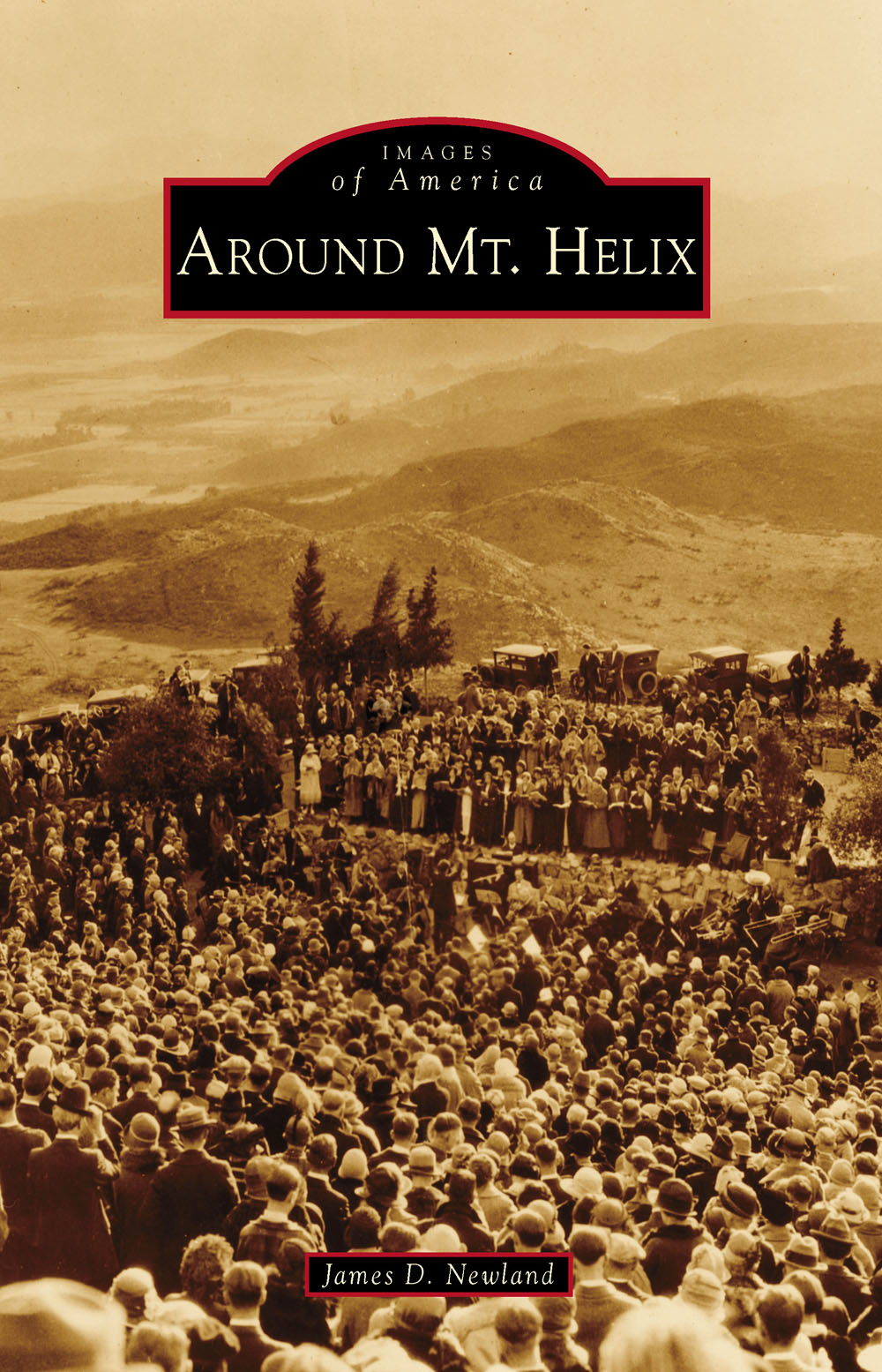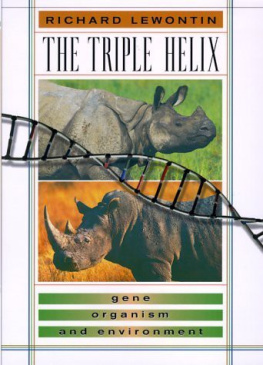
IMAGES
of America
AROUND MT. HELIX

GROSSMONT PEAK (LEFT) AND MOUNT HELIX (RIGHT), 1920S. These prominent peaks serve as the geographic hubs of the Mount Helix area. Businessman Ed Fletcher purchased the old Alta Ranch in 1902, naming the northern peak and its residential development for his partner and noted entertainer William Gross. Spring Valley pioneer Rufus Porter named Mount Helix after scientist Louis Agassiz discovered Helix aspersa snails there in 1872. (La Mesa Historical Society.)
ON THE COVER: MT. HELIX NATURE THEATER, APRIL 12, 1925. Thousands fill the new outdoor amphitheater for the facilitys initial mountaintop Easter sunrise service that inspired Cyrus Carpenter Yawkey and Mary Yawkey White to fund its construction on the prominent hilltop. This annual community tradition continues some 90 years later. (La Mesa Historical Society.)
IMAGES
of America
AROUND MT. HELIX
James D. Newland

Copyright 2015 by James D. Newland
ISBN 978-1-4671-3381-4
Ebook ISBN 9781439653876
Published by Arcadia Publishing
Charleston, South Carolina
Library of Congress Control Number: 2015933931
For all general information, please contact Arcadia Publishing:
Telephone 843-853-2070
Fax 843-853-0044
E-mail
For customer service and orders:
Toll-Free 1-888-313-2665
Visit us on the Internet at www.arcadiapublishing.com
The book is dedicated to all who have, past and present, endeavored to develop, preserve, and enhance these communities while being inspired by the cultural vantages revealed from this extraordinary pinnacle.
CONTENTS
ACKNOWLEDGMENTS
This book is the result of the dedication and persistence of Tracey Stotz, former Mt. Helix Park Foundation executive director, and John Mead, past president of the Grossmont-Mt. Helix Improvement Association. Also significantly notable is James Guys generosity in opening his father, Huberts, Grossmont collectionswithout Jims participation, this project would not have been feasible. The La Mesa Historical Society Board of Directors deserves credit for their support in extending the societys interests for local history and cultural heritage eastward. Many other institutions, historians, archivists, and friends have provided assistance, inspiration, and photographs, including the dedicated photograph archivists of the San Diego History Center, Chris Travers and Carol Myers; historians Tom Adema, Steve Van Wormer, and Hubert Guy; San Diego Modernism expert and Lloyd Ruocco historian Todd Pitman; architect John Adams; designer Mic Mead; Budd and Vicki Willis; Alice Smith; Helen OField of the Lemon Grove Historical Society; Carol Surr of the Spring Valley Historical Society; Eldonna Lay and Mike Kaszuba of the El Cajon Historical Society; the Helix Water Districts Kate Breece; Armando Buelna and Mark Robak of Otay Water District; Connie and Lynn Baer of the Grossmont High School Museum; Trinity Presbyterian Church; Santa Sophia Catholic Church, world champion Little Leaguer Chico Leonard; Herb Dallas of CalFire; Anne Krueger of Grossmont Community College District; and the principals and staff of Grossmont, Helix, Mount Miguel, Monte Vista, and Valhalla High Schools, as well as those of the Cajon Valley School District Office, Fuerte Elementary, and Hillsdale Middle School. Additional thanks go to editor Lily Watkinss tried but accommodating patience. If I ever get to the Palmetto State or you visit SoCal, I owe you a pint or two of your choice. Once again, no greater thanks and profession of love can go to my wife, Jennifer, and daughter, Lindsay, for their sacrifices in living with me through yet another book.
INTRODUCTION
In 1872, world-renowned pioneering natural scientist Louis Agassiz clambered across the rocky cylindrical peaked mountain bounding the northern slope of San Diego Countys San Jorge Valley (todays Spring Valley). On what would turn out to be the final scientific expedition on the Swiss-born naturalists lifelong professional quest to identify the planets unique flora and fauna, he had a surprising discovery. Agassiz found Helix aspersa snails. In this place, then considered a remote and exotic landscape (especially to northern Europeans and Easterners), Agassizs discovery of this native European gastropod apparently perplexed him. Such was his supposed amazement that his host, local rancher Rufus Porter, felt compelled to honor the noted scientists visit and unique discovery by naming the sightings location Mount Helix.
It is uncertain that the 1,375-foot-high pinnacle had a previous name. Its steep, rocky slopes were not conducive for permanent settlement or significant resource procurement, but it certainly had been an icon for the native Kumeyaay people, who for centuries inhabited and prospered in the surrounding spring-fed fertile valleys. For the pioneering Euro-Americans of the area, it also served as a geographic landmark. Travelers to San Diego, both to and from the east, would encounter and identify this landmark pinnacle on their journeys. They would do so if they traveled the Chollas and Cajon Roads that passed over the mesa that stretched east from the frontier city and ended at the Alta Pass (now Grossmont Pass), which led into the El Cajon Valley, or if traversing along the more southerly federal route that roughly follows State Highway 94 today. Either way, Mount Helix provided, as it still does, a familiar and distinctive geological signpost and natural milestone.
Additionally, Mount Helix serves, even more concretely, and not just due to its historic nature theater and park, as a cultural beacon and focal point for todays mostly unincorporated surrounding communities of Mount Helix, Grossmont, Calavo Gardens, Casa de Oro, Rancho San Diego, and Spring Valley. Its iconic influence is also apparent to the adjacent historically related municipalities of El Cajon, Lemon Grove, and La Mesa. Especially for the current 20,000 residents of the surrounding semirural suburban neighborhoods, these areas within Mount Helixs shadow are now renowned for their idyllic family-friendly rural suburban landscapes, classic early-20th century Revival-style and custom Mid-Century Modern homes and buildings, and long-standing community institutions.
The story of how these lands around Mount Helix developed into well-known and iconic semirural suburban communities is both consistent withand yet in many ways, contradictoryto San Diego Countys typical land-use development narrative. Originally, 19th-century American settlers and speculators had identified these lands as promising hinterlands for traditional agriculture-based rural farming communities similar to their previous homes in the Midwest and East. In the early-20th century, others saw these still mostly undeveloped and unfettered lands as having a potential for more progressive utopian settlements that embraced new ideas, innovation, and cutting-edge melding of the best of rural and suburban amenities and values. Likely inspired by the vistas encountered from atop Mount Helix or other local inspirational promontories such as Grossmont Peak, Spring Valleys Dictionary Hill, or the even higher and more prominent San Miguel Mountain to the south, early local 20th-century developers, promoters, and civic leaders planned and set into motion cutting-edge semirural tracts with suburban amenities and subsequent community institutions.
Next page










